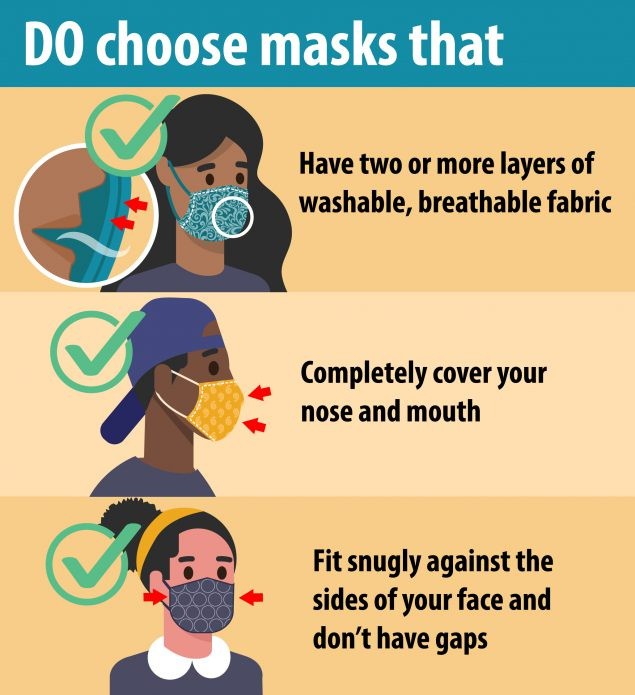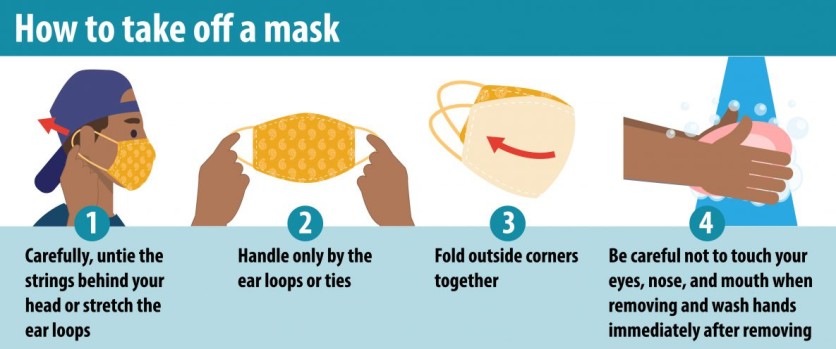A new study conducted by the University of Edinburgh's Roslin Institute found that wearing a surgical mask stops 100% of droplets while a homemade mask prevents 99.9% of droplets from spreading into the air when a person speaks or coughs.
According to tests conducted by researchers, a person who does not wear a mask and stands six feet away is at 1,000 times higher risk of inhaling droplets than an individual wearing a mask and stands just 1.5 feet away from a coughing person. The study, which is published on preprint server medRxiv.org, looked at surgical masks and single-layer cotton masks.

Lead researcher Dr. Ignazio Maria Viola, a reader at the University of Edinburgh's School of Engineering, said that face masks of any material can effectively filter small droplets in the air. The research team also found that a homemade single-layer cotton mask can cut the number of droplets by over 1,000 times.
"We discovered that even the simplest handmade single-layer cotton mask is tremendously effective," Viola noted that larger droplets, which are believed to be more threatening.
Researchers ran two types of tests: the first was with a mannequin that ejected fluorescent droplets while the second one was with human volunteers who speak and cough. Using laser sheet illumination, the scientists quantify the number of droplets in the air while they used a UV light to check those that landed on the surface.
Putting on masks on the mannequin shows that less than one in 1,000 particles were spread by speaking or coughing. This is significantly less compared when human volunteers spoke and coughed without a mask, which sprayed up to thousands of particles into the air.
These findings highlight the importance of wearing a face-covering in public to avoid getting infected by the virus or prevent infecting others for those who already have COVID-19.
Read also: Portuguese Scientists Make a Mask that 'Kills' Coronavirus Upon Contact with the Fabric
CDC: How to get maximum protection from face masks
The Center for Disease Control and Prevention (CDC) has recently issued a guideline in choosing masks and how to wear and clean them. Since masks help prevent the spread of coronavirus, CDC urges the public to wear face covers when going around people outside of the household.

- Pick a mask that has two or more layers of breathable and washable fabric. It should be comfortable enough to use, so it would be better to avoid vinyl and other thick textiles.
- Make sure to cover the mouth and nose completely. Using masks with valves is discouraged as these would allow particles to escape.
- Make sure the mask is secured. Those who wear glasses should pick masks that fit closely over the nose like those with wires to reduce fogging.
- Provide a mask made for kids to children over two years old.
- Wash hands before putting on a mask, then ensure it snuggly fits the nose, chin, and sides of the face.
- Avoid touching the mask while wearing it.
- Wash the mask regularly using soap and water. Dry it at the highest temperature.

Read Also: Anti-Hypertension Drugs Could Help Reduce COVID-19 Deaths, New Study Shows
This is owned by Tech Times
Written by CJ Robles
ⓒ 2025 TECHTIMES.com All rights reserved. Do not reproduce without permission.




